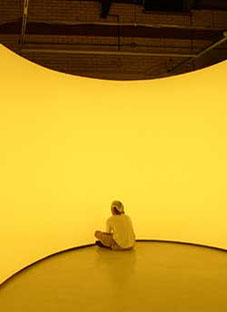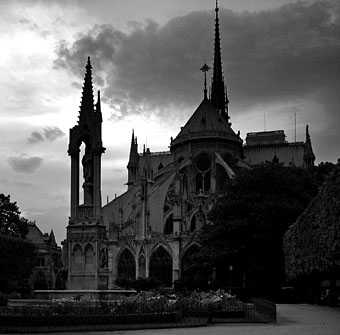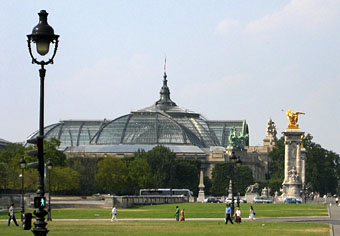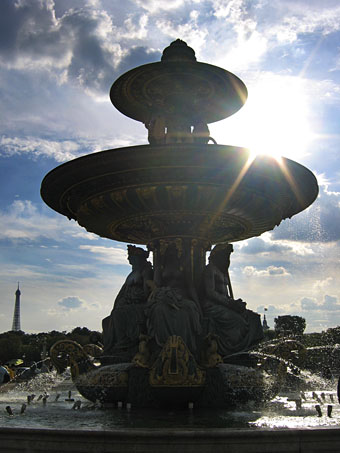
left: The Weather Project,
Tate Modern, 2003.
Olafur Eliasson
Ikon, Birmingham
Alfred Hickling
Thursday August 3, 2006
The Guardian
The Danish artist Olafur Eliasson is best known in this country for the Weather Project, which had visitors to Tate Modern’s turbine hall convinced they were staring into the sun. His installation at Ikon, though smaller, similarly leaves you with spots before your eyes.
There has always been a quasi-scientific element to Eliasson’s work: here he teams up with Boris Oicherman of the University of Leeds to conduct an experiment in colour perception. It’s an old saw that the Inuit recognise over 30 different shades of white. But it’s also worth considering that Russians distinguish two different types of blue, while the English language is unique in having a word for pink. Eliasson’s installation is an intriguing demonstration that, as everyone’s retinas are distinct as their thumb-prints, no two people experience the same colour alike.

It begins with a rainbow frieze of coloured blocks demonstrating the spectrum visible to the human eye, painstakingly prepared by master colourists. You next enter a darkened room, where assistants guide you through the experiment. You peer down the eyepiece of an instrument which displays two differently coloured semicircles, and spin a dial until both appear to be a matching shade. It’s reminiscent of the test they made you take at school for colour-blindness; you half expect to be scrutinised by the nit-nurse afterwards.
The final room projects random results against the wall like a large, illuminated piece of op art. Fortunately these are anonymous, as the last thing you wish to have publicised as an art critic is that your colour perception is rubbish. It’s fascinating proof that some people have difficulty distinguishing lemon from lime. But, naturally, I like to believe that my own contribution was spot on.
• Until September 17, 2006.
Ikon Gallery
1 Oozells Square
Brindleyplace
Birmingham




